The healing power of Milk, a distillation of plants.
A bit about camel milk, and how different ways of feeding livestock can lead to healthy or unhealthy food.
I didn’t even know I was sick,
until I started taking medicine.
I sit and watch a man milk a camel while supporting a pot on his raised leg. He belongs to a caste in Rajasthan called the Raika, who have a history of camel herding. He brings the pot over and pours me a cup. It tastes sweet and fruity, with a hint of salt. I’ve tasted milk from camels feeding on 3 distinct plant communities, and they taste noticeably different. The Raika say they can tell what plants a camel has been eating by tasting the milk. I suspect that more than other types of milk, that from camels can vary in flavor depending on feed. I may have found the clearest example yet of the milk-as-landscape-distillate theory, as well as further evidence for my milk is medicine rant.
Milk is a conduit between the solar system and mammalian bodies. Plants convert sunlight, water, and atmospheric gases into solid form, given structure by a cellulose lattice. Even ruminants cannot break cellulose down, they rely on the bacteria that inhabit their digestive tract to do this for them. Some of the nutrients and phytochemicals freed up from this fermentation transfer into milk (and cheese), along with immune-system building blocks. This is an understudied topic, but I find suggest the work of Fred Provenza and Bruno Martin as good places to start. I combine this science with my own experiences and things I’ve heard while traveling to form the following tenet: Milk is a distillation of the food an animal eats and the water it drinks.

On one end of a spectrum is milk produced in the industrial model, from animals fed a few species of grass or legumes, often grown with many chemical inputs and lots of water. A grain ration based on GMO corn and soy is also common, and some say necessary to meet the caloric needs of “high-efficiency” livestock. This is a very new way of growing feed and raising animals, an experiment that has failed miserably. Even so called “grass-fed” meat and milk can be produced on an industrial scale, with a diet lacking diversity. Cows out on pasture may be grazing on a monocropped green desert that is depleting soil health. The milk produced by these systems reflects and distills it. A liquid insult to life, modern milk is further alienated through pastuerization and homogenization into the equivalent of wonder bread. The original source of nourishment and connection with motherhood, life, and the planet is turned into a Dead Sea with corporate sponsors.
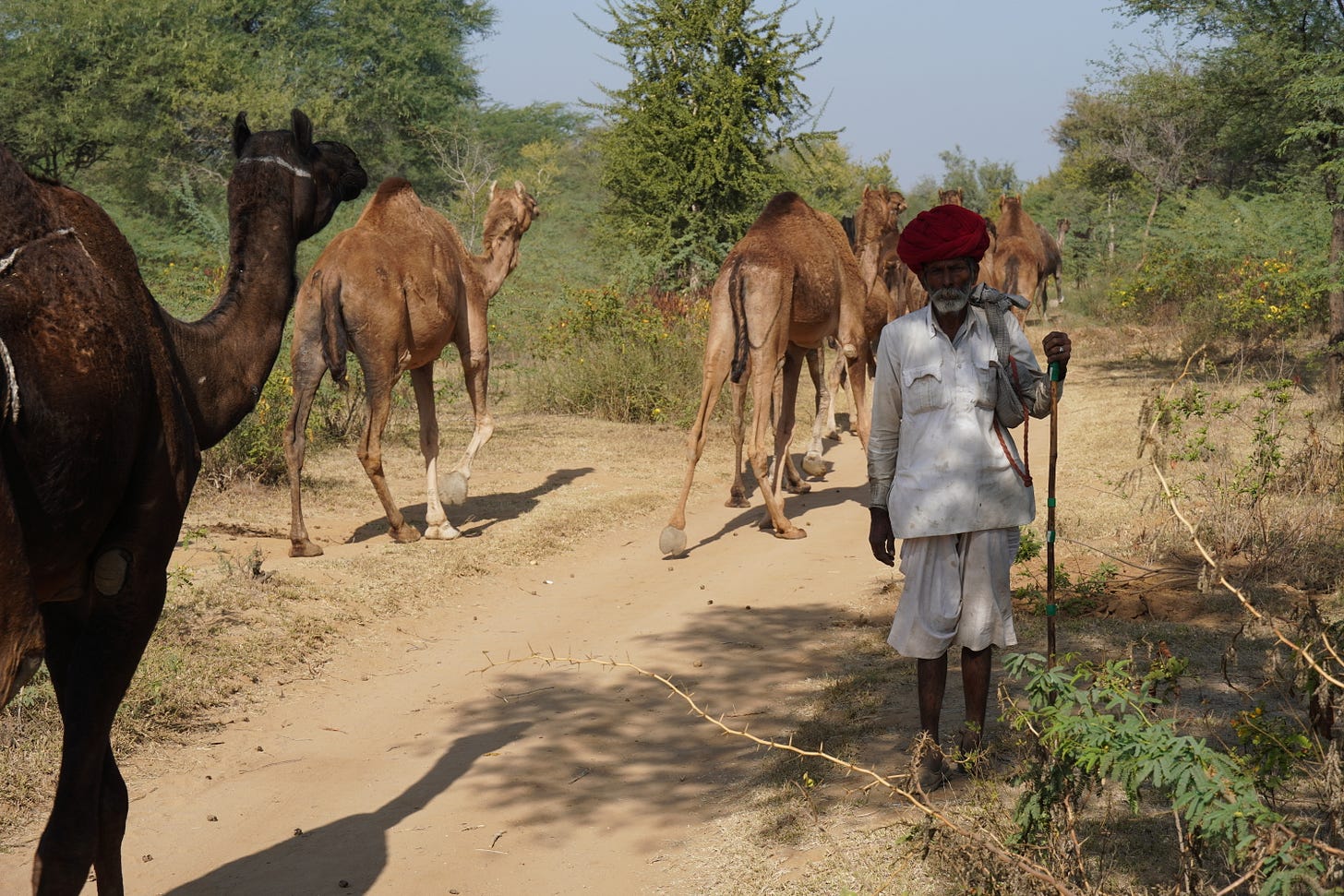
On the other extreme is milk born from animals grazing on uncultivated landscapes, grasslands, rangelands, or in rotational grazing systems. There are many variations from traditional mobile pastoralism and transhumance to new styles of prescribed grazing for various positive ecological impacts. What links these is the dietary diversity of the animals, which translates into the nutritional value of the meat and milk. I want to focus on a beautiful example of this that I recently experienced; the agropastoral camel rearing of the Raika in Rajasthan.
The camels are spread out, heads bobbing up to stare at me as they munch contentedly on a pain salad. They are feeding on a low growing plant that wears a protective coat of long, sharp quills. I dont even want to touch it, let alone eat it.
Echinops echinatus, known as Indian Globe Thistle, is refered to here as Unt Kantalo. Camel thistle. Because camels relish it. It is considered a weed, and grows thick in ag fields that sit fallow for long periods between the monsoons. It is on a list of 36 plants that the camel herders identify as being of major importance as feed, and also of possessing medicinal value. The list of usages is long, but what interests me more is to wonder if these healing traits transfer into the milk itself, or what kind of alchemy happens in the process of digestion, milk secretion, and then fermentation into sour beverage or cheeses?
Can cheese be medicine?
I want to digress, to share a story I was told by a French anthropologist who has devoted herself to the cause of the shepherds of Kelmend, Albania. She is an academic, intensely textbook-footnote-rational. Not a woo-woo, speaking to the Rock People type. Which made her hard to take seriously, but somehow lends credence to her testimony. She arrived in Albania with a chronic stomach condition that had her in constant pain, and on a very restricted diet. It had lasted for years, with doctors unable to do more than numb the pain. A group of herders she was working with asked her detailed questions about her condition. They then took their goats to feed on specific plants. They milked these goats, and made a cheese. When she ate the cheese, she claims her condition disappeared, permanently.
This story is one piece in a growing belief I have that goat milk CAN be powerful medicine. I have heard from multiple herding communities that they give goat milk to the very young, elderly, or those with compromised immune systems. When you hear claims like this made around the world, that’s because it’s true. When you look at the eating habits of goats, one level of explanation is apparent. Goats like woody, bitter, medicinal plants and trees. And eat a huge range of them. Camels share this habit, and like to eat the leaves of thorny trees, as well as bitter shrubby plants.
The next level is the high amounts of antimicrobial and immune boosting substances such as lactoferrins. Many of these substances are high in goat milk, but camel milk takes it to another level. Camel milk’s antimicrobial attributes cause it to resist fermentation. It also resists coagulation. It actually reminds me of colostrum, the milk a mother lactates in the first days of life. Colostrum is likewise full of immune boosting compounds and resists ferm and coag. It is fairly difficult to make cheese efficiently with camel milk. I’ve often said that I love working with sheep milk because it wants to be cheese. It coagulates so readily. It is so rich in both fat and protein. Now I see the opposite in camel milk. Which is causing me to challenge my belief that milk is better off as cheese. Camel milk seems perfect as is. Milk has been a part of the healing paths of many people. Camel milk is just the most extreme example of what I’m coming to realize: that milk can be medicine, on many levels.
Camel milk is also being used successfully as a Treatment for autism and diabetes. I ask you to look into this yourself, before dismissing it out of hand. Just know that there is a growing market for both camel and donkey milk specifically for therapeutic use for these conditions. People are paying high prices, and putting effort into sourcing these because they appear to be working. I suspect that among other things, these milks can impact our gut microbiomes in a different way, and can cause dramatic shifts in the state of our health. Milk is designed to carry suitable bacteria to establish healthy immune systems in infants. So it’s no surprise that it can boost those of adults, or push us from illness back to health.
I stand in the sun, looking up at a camel as it eats the leaves of an acacia tree. It watches me as it chews, some sort of understanding passes between us. I see you. Namaste. It brings its face close to mine, and I smell its breath. It smells like plants, a bouquet garni of the land we walked today. It smells similar to how her milk tastes. A numbing wave of meaning washes through me, a physical manifestation of emotional significance and intellectual insight that is familiar and profoundly comforting. In these moments, I know everything is perfectly in its place in this universe.
The point of the healing journey isn’t to eradicate sickness, or to find a final state of supreme health. The point is to leave, get lost, grow, to get sick, rebuild, to come home tired, with good stories. And maybe a bit of medicine.





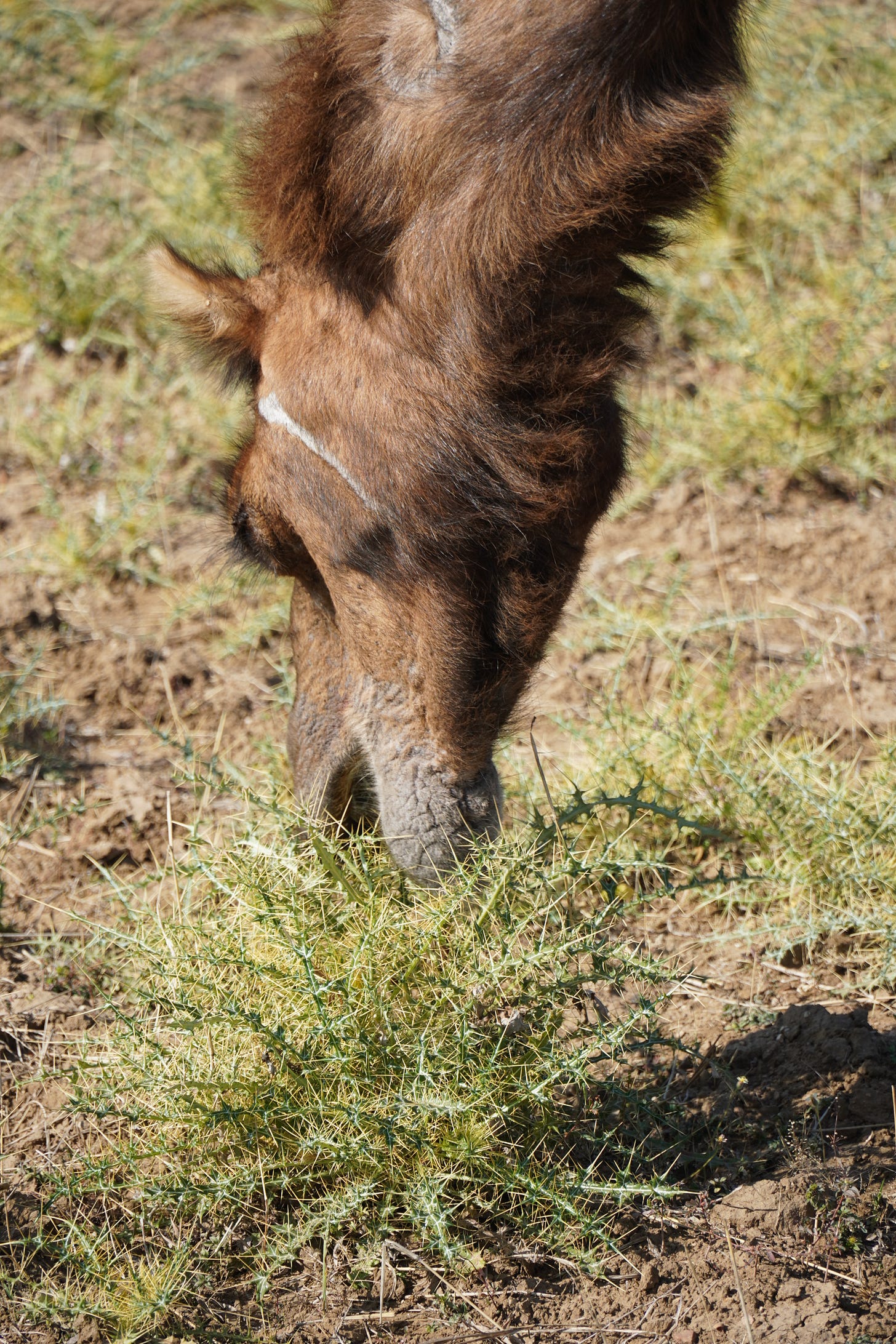

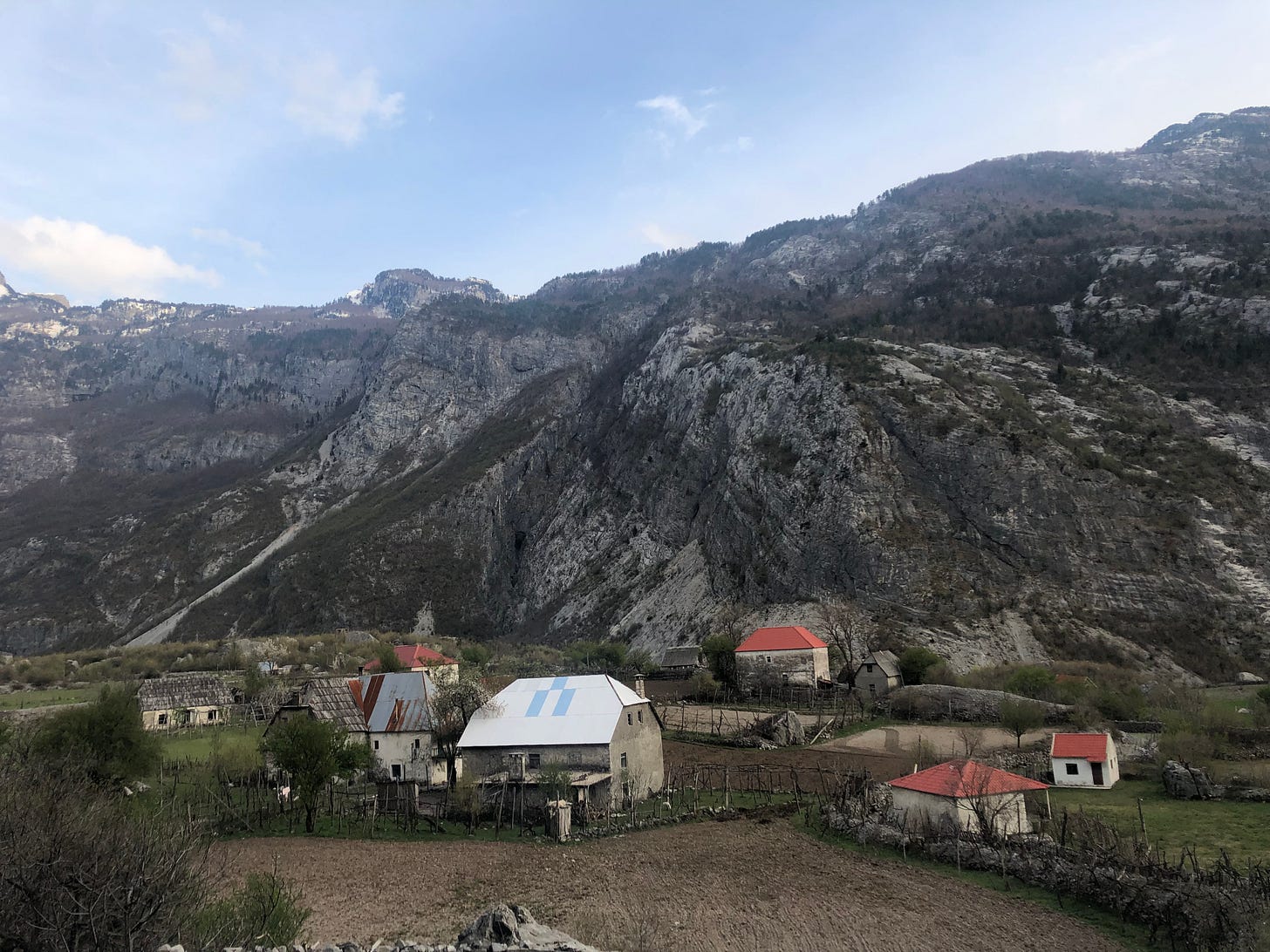
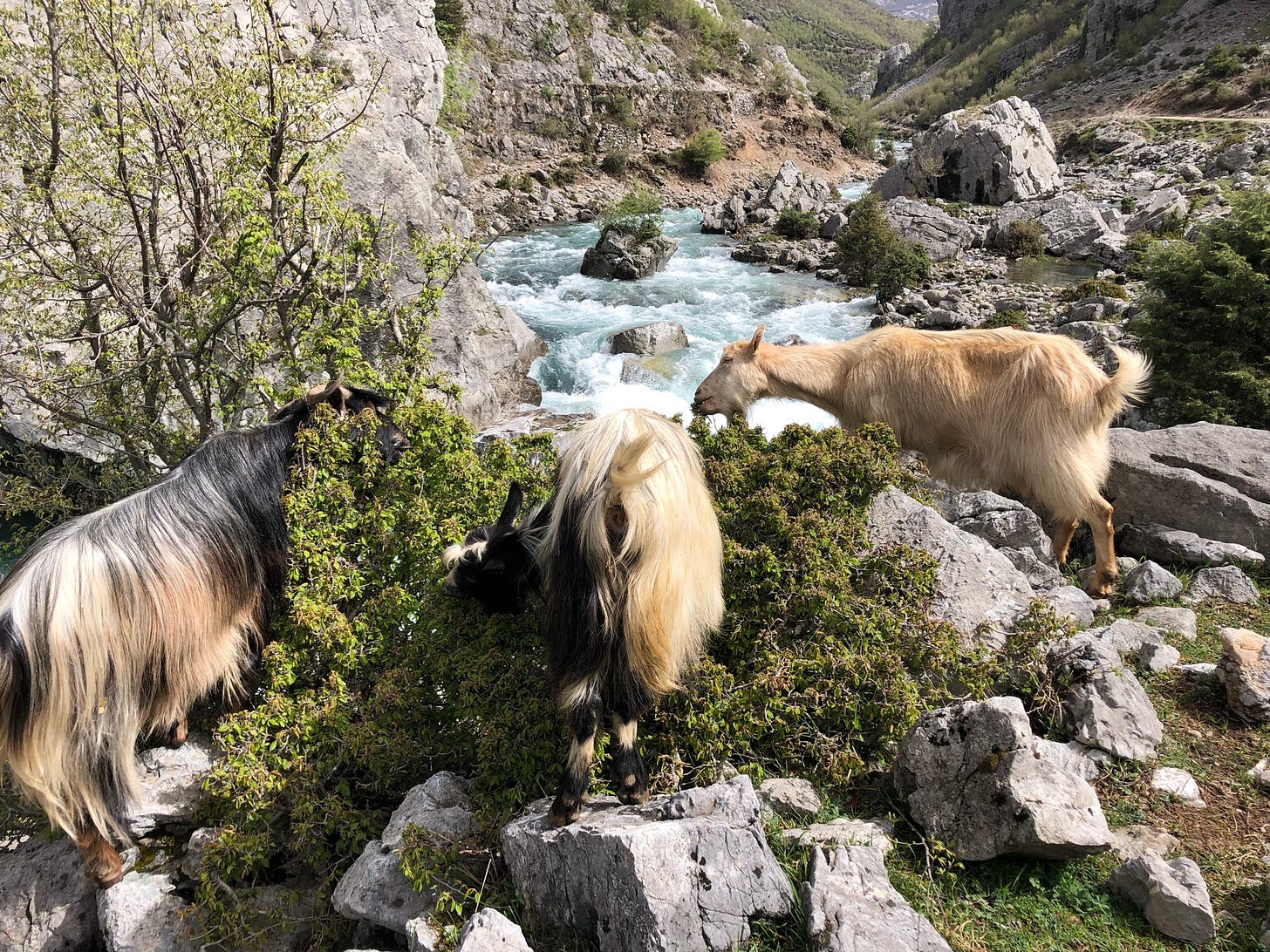


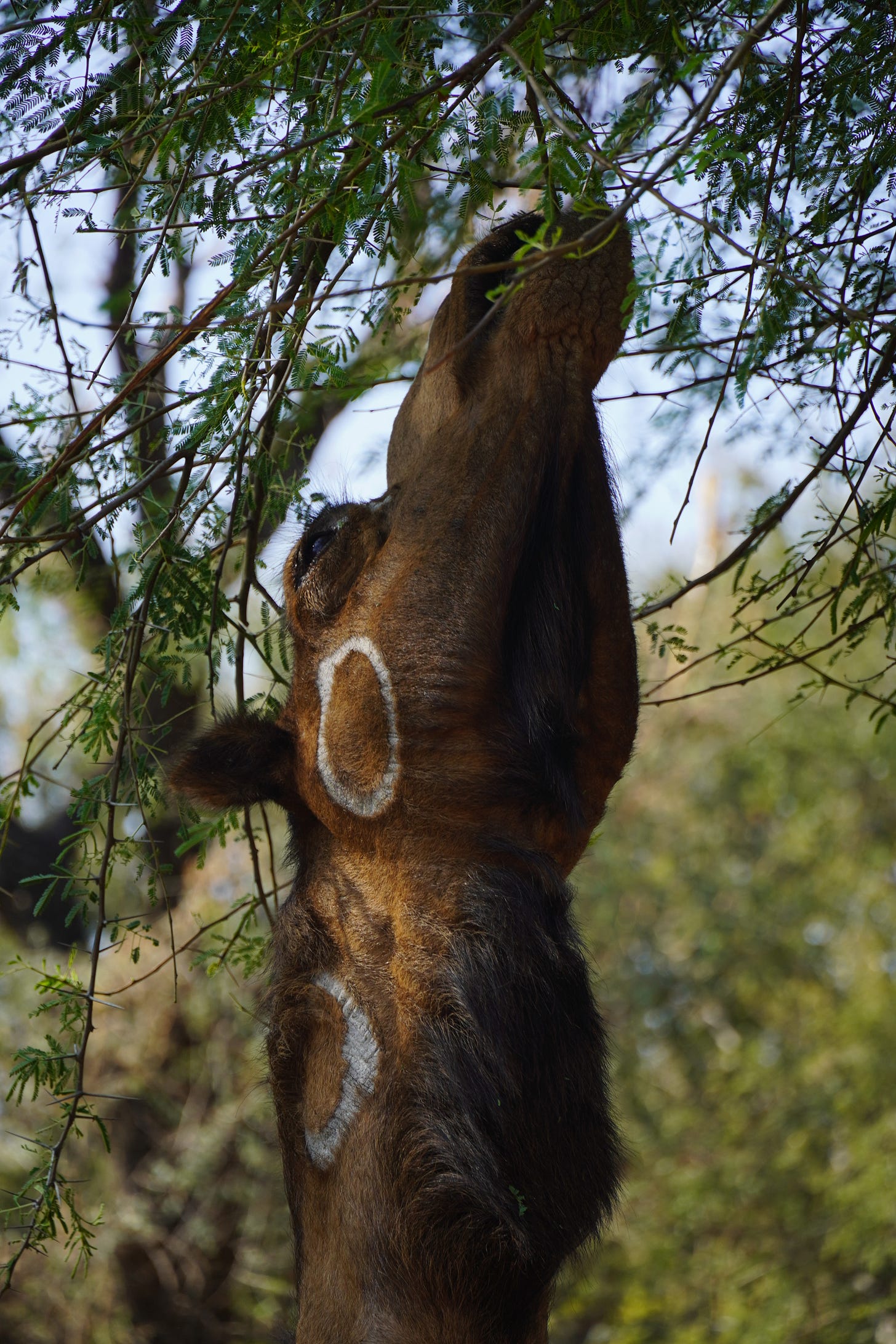
Thanks so much for your travel and sharing of it, but also your drive to understand and nuance the discussion of “non-vegan” food. I appreciate you can both point out the absurdity and tragedy of modern animal practices without throwing away the incredibly heartbreaking and heart building aspects of our co-evolution with our animal brothers and sisters on this planet to find enough calories to thrive. Thanks for being real that all food is also death, and death is essential, like birth, and milk. Too many people seem to want to cordon off this discussion with fake feel good processes, and processing, and labels on all sides of modern dietary nonsense. Gratitude!!
There are so many gaddi shepherds moving through the mountains with goats and sheep here in Dharamshala. Never stopped them to talk because they always are on the run but will try next time!